The fiery red and orange flowers of Crocosmia have been making a vibrant contribution to British gardens since they first started to appear in nurseries at the end of the 19th century. There are now hundreds of cultivars and hybrids, all descended from a handful of species. Crocosmia is a relatively small genus, with less than a dozen species native to southern and eastern Africa, where they are mainly found growing in open, moist grasslands and on forest margins. Crocosmia aurea is the most widely known species and exhibits many of the qualities that make the genus attractive garden plants.
Jump to
- How to grow Crocosmia
- When to plant crocosmia
- When do crocosmia flower?
- Where to plant crocosmia
- Caring for crocosmia
- Lifting and dividing crocosmia
- What to do with discarded crocosmia
- Crocosmia pests and hardiness
- Where to see and buy crocosmia
- The best crocosmia to grow
How to grow Crocosmia
When to plant crocosmia
Crocosmias are sold as both dormant corms (that look similar to gladioli) or as growing plants. Corms should be planted in spring; plants growing in pots can be planted any time. Before planting, incorporate lots of organic material, such as garden compost or well-rotted manure, into the soil. Corms should be planted to around three or four times their depth.
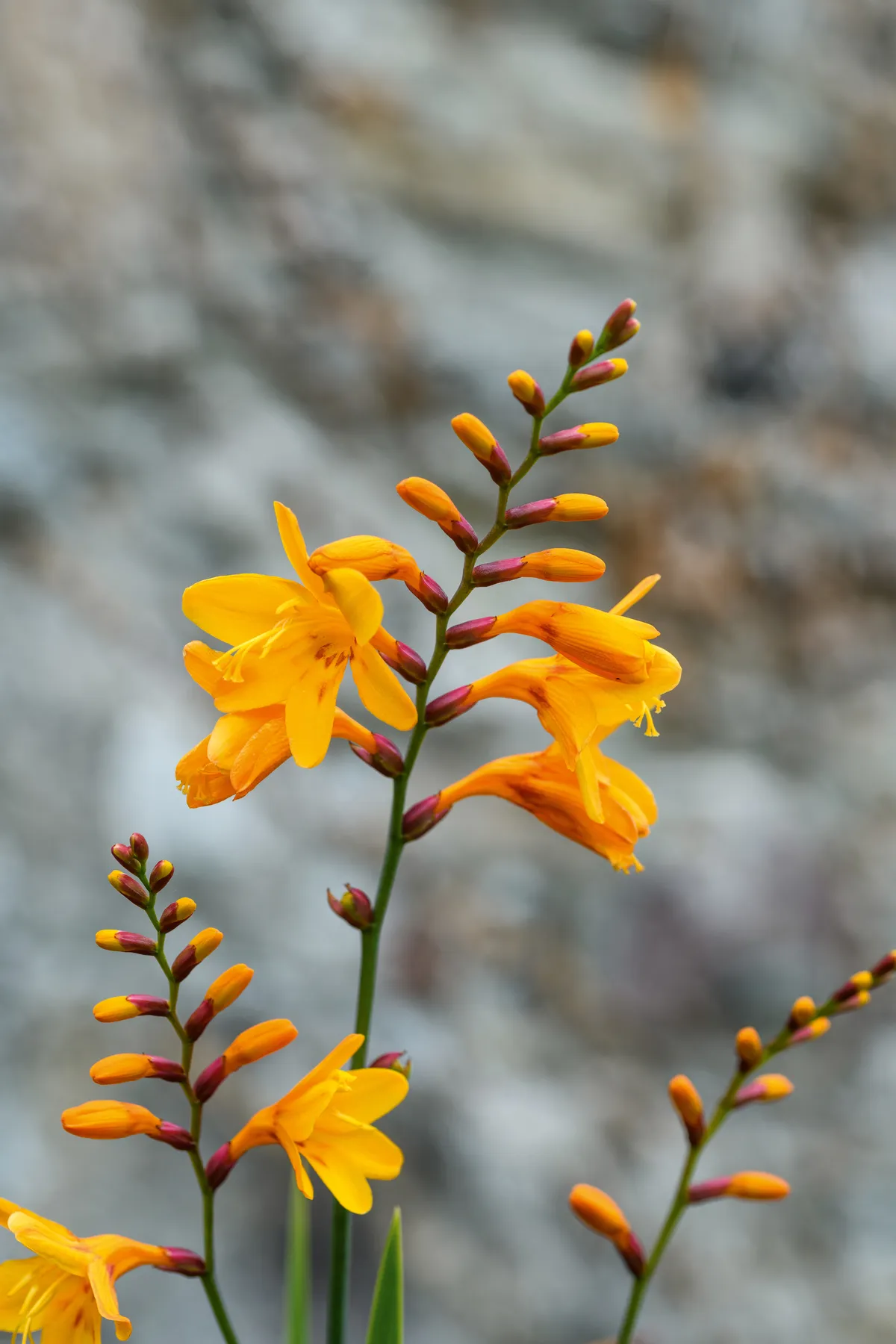
When do crocosmia flower?
Crocosmia flower between June and August, some lasting into September.
Here's more summer flowers.
Where to plant crocosmia
Crocosmias prefer a warm, sunny position in fertile, moist soil that doesn’t become waterlogged. Cultivars of Crocosmia pottsii need a soil that doesn’t dry out during summer. Most crocosmias will cope with a little light shade but their flowering will be less profuse.
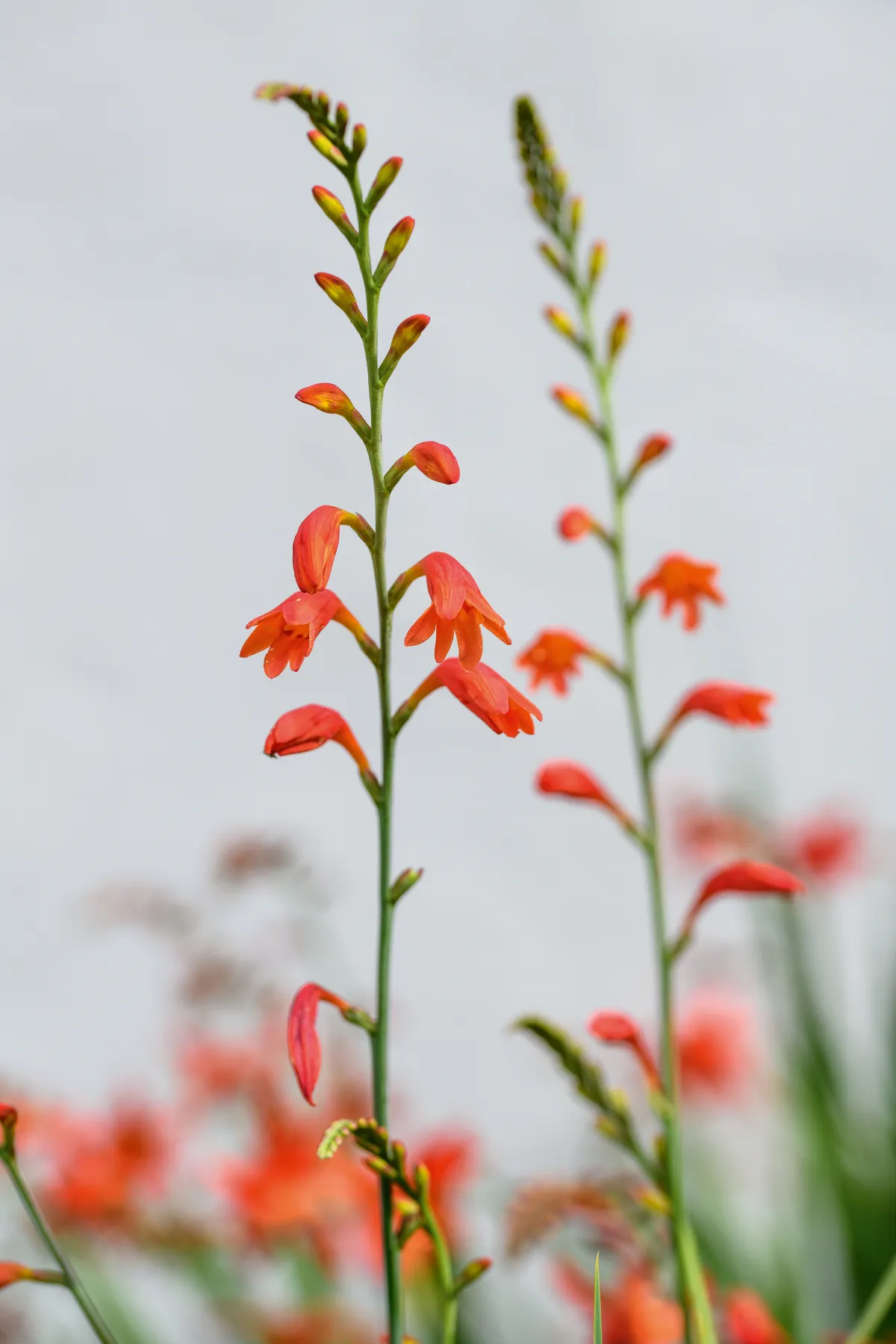
Caring for crocosmia
In particularly cold gardens, it is advisable to cover the plant with a protective mulch. In late autumn, cut the plant down to a few centimetres above the soil and cover with a layer of garden compost or other organic matter. Some gardeners in very cold areas dig up their plants after the first light frost and store the corms in a dry and frost-free place over winter. Although this is a palaver, it does ensure the plants’ survival.
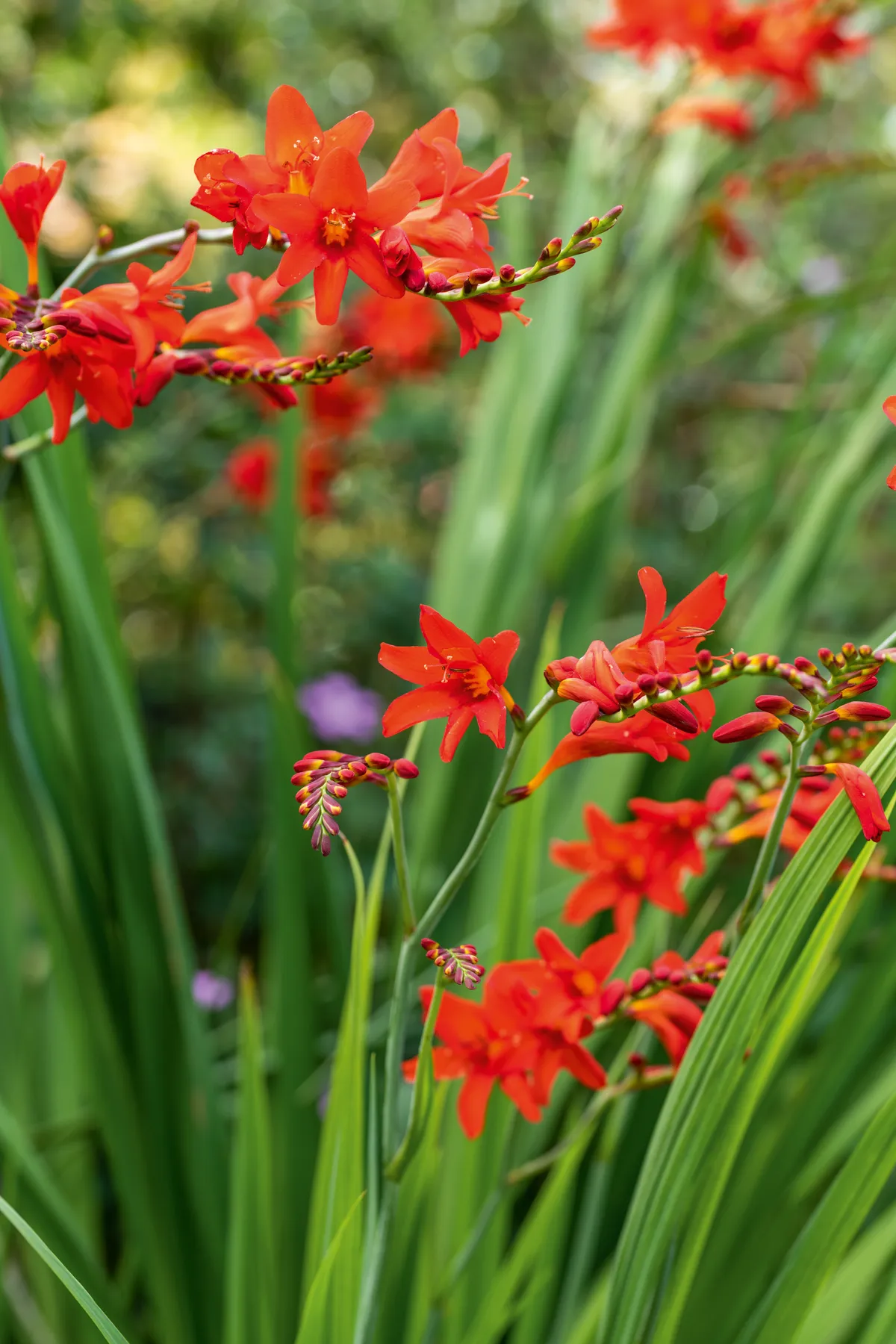
Taller cultivars will benefit from some form of discrete staking, particularly in areas of high rainfall where heavy rains can topple the plants. Semi-circular hooped wire frames are ideal and should be put in place in spring. Crocosmias are not heavy-stemmed plants and often a few twiggy sticks will provide sufficient support.
Lifting and dividing crocosmia
After three of four years, clumps of crocosmia will become congested, reducing the number of flowers they produce. Sometimes, even, there is lots of foliage and no flowers. Digging up the plant will reveal long chains of fibrous corms. These are easy to twist apart to separate them from each other, saving the topmost corm to replant. The lower corms will eventually also produce flowers, but this may take a couple of years.
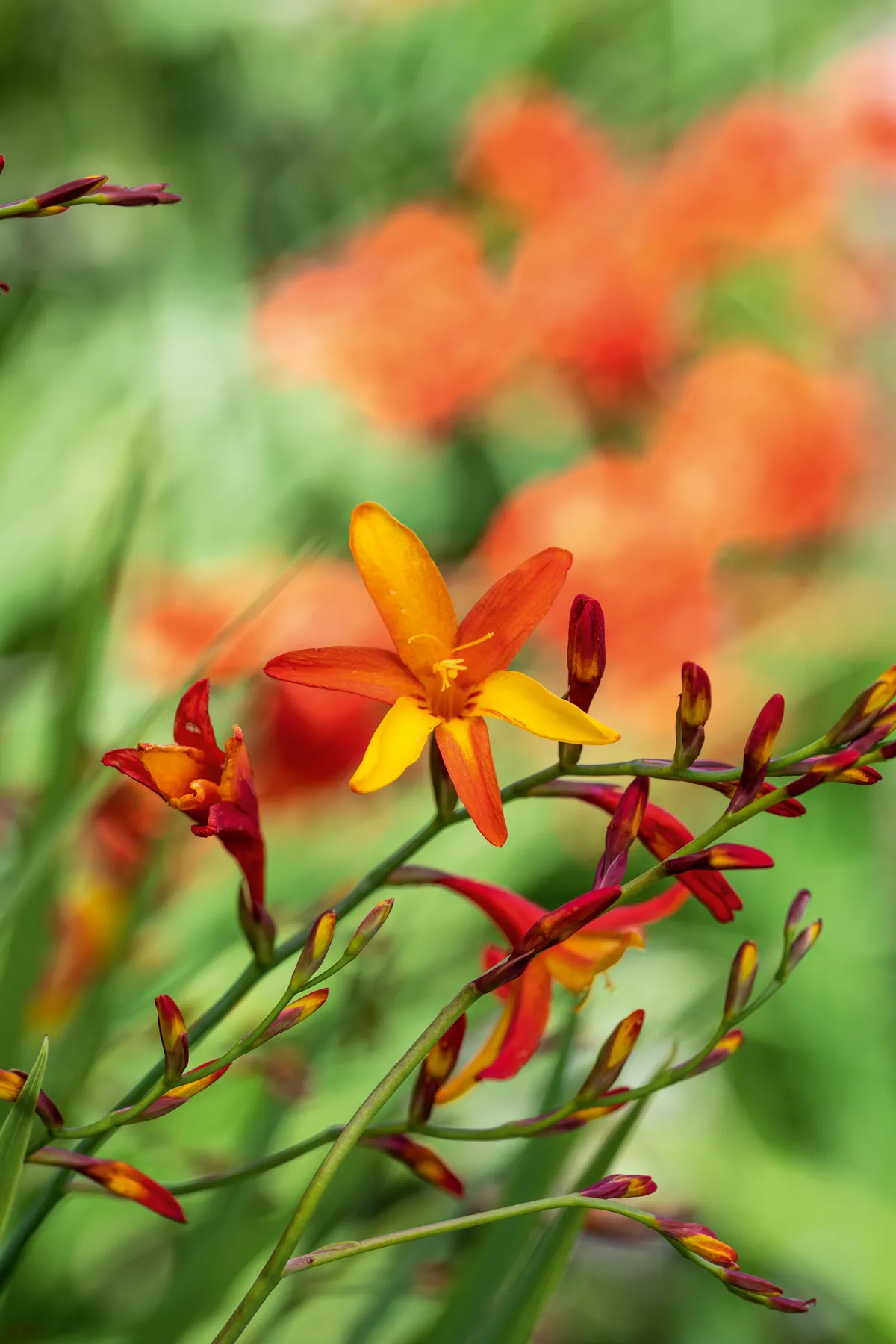
What to do with discarded crocosmia
Do not put discarded corms on the compost heap. Domestic heaps do not generate enough heat to destroy the plant and you will end up by spreading the crocosmia around the garden. The best way to dispose of them is to send them away in the green waste bin.
Crocosmia pests and hardiness
Crocosmias are not generally susceptible to pests and diseases. In hot, dry summers they can be affected by red spider mite, which feeds on the sap in the foliage and causes mottling. Ensuring plants are well watered will help.
As a rule of thumb, the more intense the colour of the flower, the hardier the plant. Pale flowers, particularly pale yellows, tend to be tender. Hardy cultivars also tend to have smaller flowers.
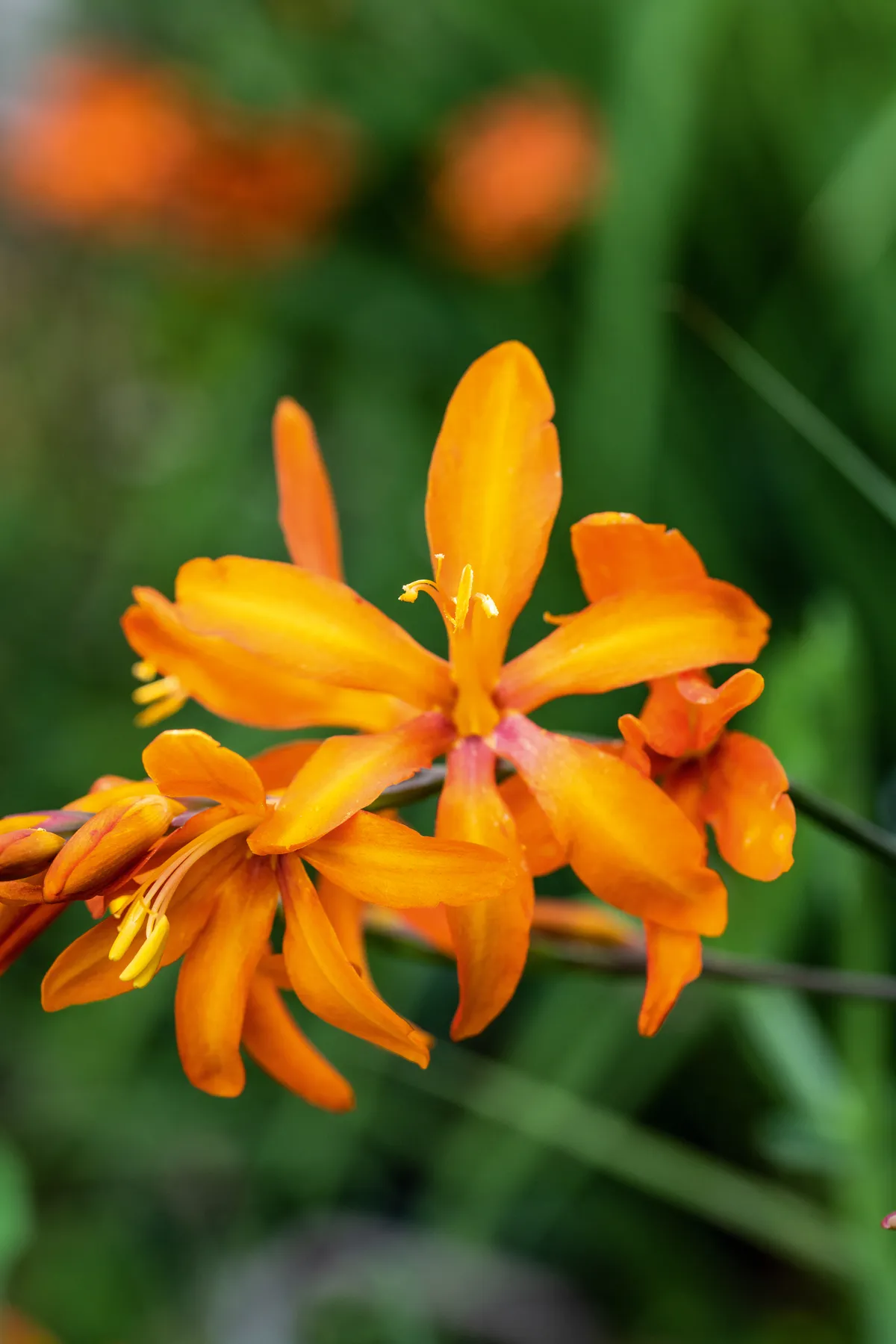
Where to see and buy crocosmia
• Beth Chatto’s Plants & Gardens Elmstead Market, Colchester, Essex CO7 7DB. Tel 01206 822007, bethchatto.co.uk
• Farmyard Nurseries Dol Llan Road, Llandysul, Carmarthenshire SA44 4RL. Tel 01559 363389, farmyardnurseries.co.uk
• Trecanna Nursery The Old Barn, Chilsworthy, Cornwall PL18 9PB. Tel 01822 834680, trecanna.com
The best crocosmia to grow
Crocosmia ‘Lucifer’
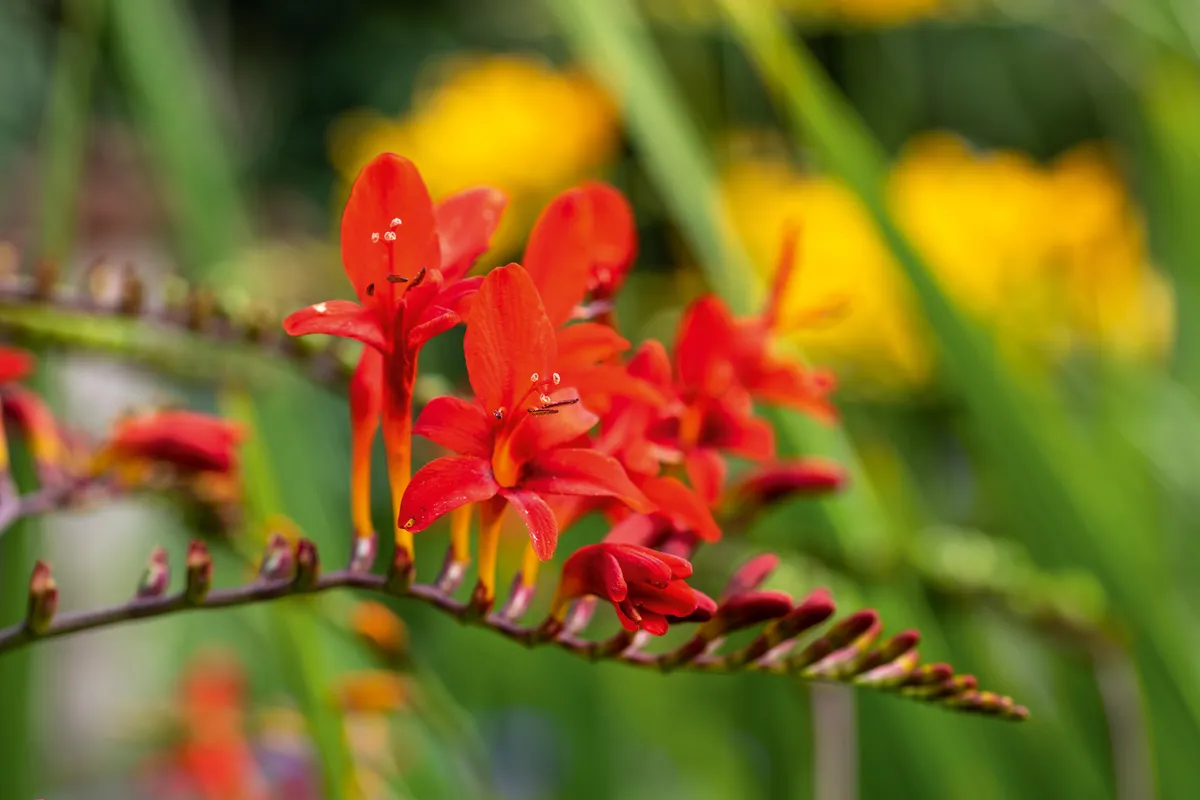
Bred in the late 1960s by Alan Bloom of Bressingham Gardens, this widely grown cultivar offers bright-vermillion flowers on tall, wiry stems for several weeks in July and August. 1.2m x 70cm. AGM. RHS H5, USDA 5a-9b.
Crocosmia x crocosmiiflora ‘Columbus’

Dark stems carry gold, purple-tinged buds that open to reveal orange-yellow flowers. Each petal’s base is delicately marked with orange spots. Blooms from June to September. 75cm x 45cm. AGM*. RHS H4, USDA 6a-9b.
Crocosmia ‘Citrone Spray’
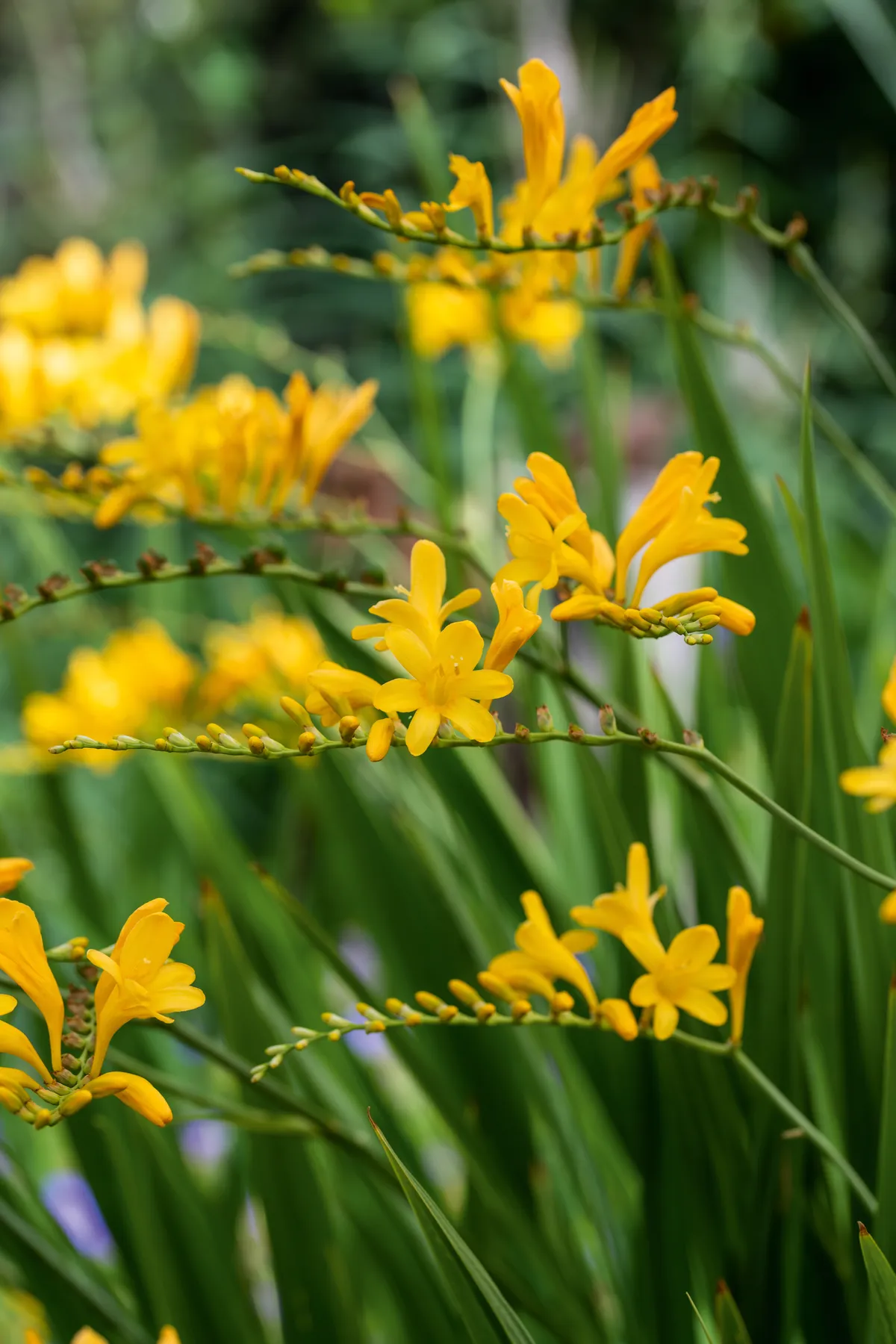
A tall hybrid with masses of lemon-yellow flowers. The flower sprays cascade outwards, in the manner of a freesia. It blooms slightly later than other crocosmias, so it is a useful plant for extending the flowering season. 1.2m x 70cm.
Crocosmia ‘Bee’s Delight’
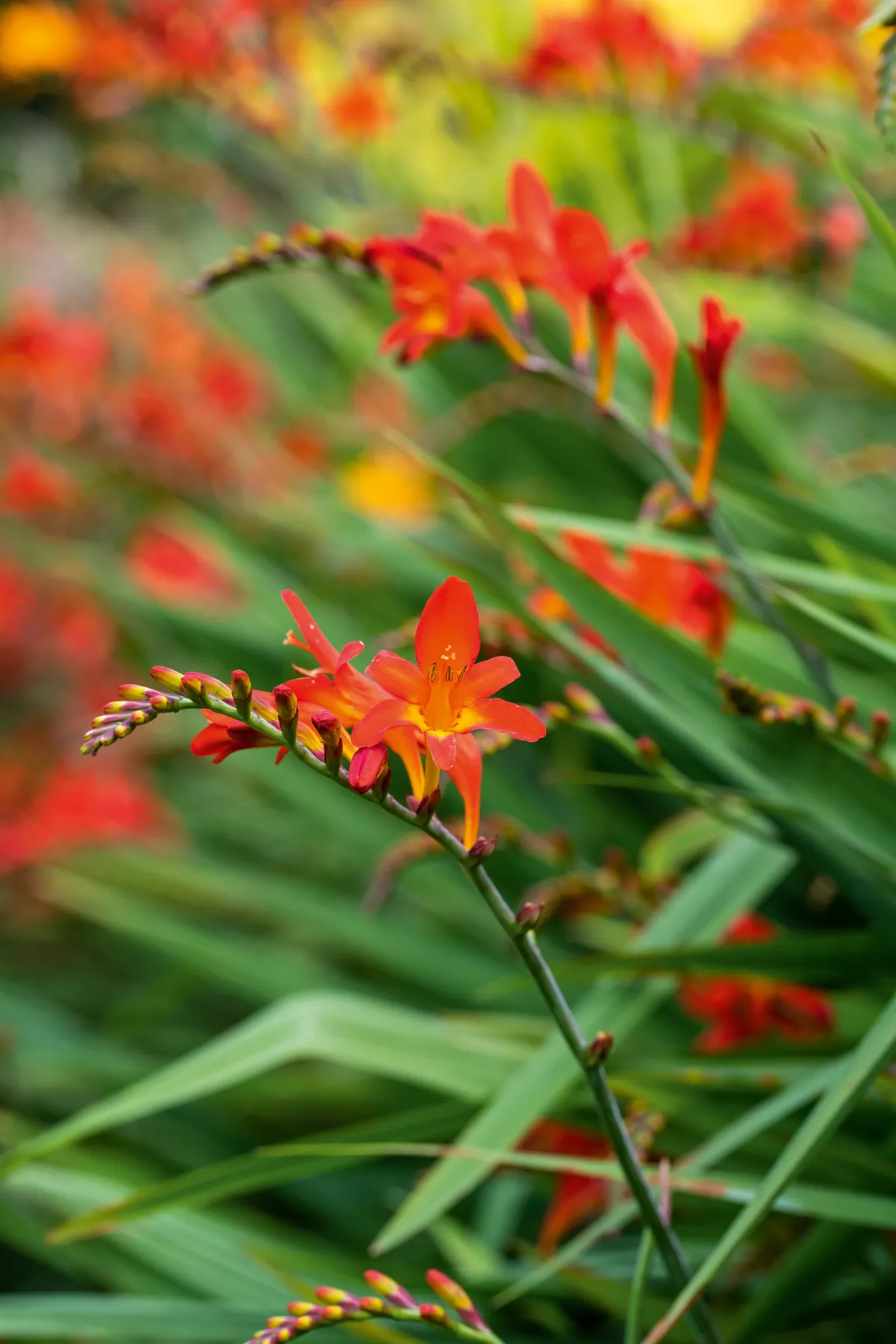
Introduced by Trecanna Nursery in 2022. Each stem carries around 20 luminous red flowers, which have golden centres. The flared flowers provide easy access for bees, hence the name. It will be a few years before this plant is widely available. 90cm x 40cm. RHS H4, USDA 5a-9b.
Crocosmia pottsii ‘Culzean Pink’

Delicate, tubular flowers that are 2cm long dangle sparsely from the upright stems. There’s no genuinely pink Crocosmia, but this cultivar comes close, with pale-orange flowers that have a pinkish flush. 1m x 45cm. USDA 6a-9b.
Crocosmia ‘Tamar Glow’

Mark Walsh of Trecanna Nursery was aiming to breed a shorter formof C. ‘Lucifer’ when this seedling appeared: a floriferous and long-flowering hybrid with glowing red flowers on arching stems. 1m x 40cm. RHS H5, USDA 5a-9b.
Crocosmia ‘Hellfire’
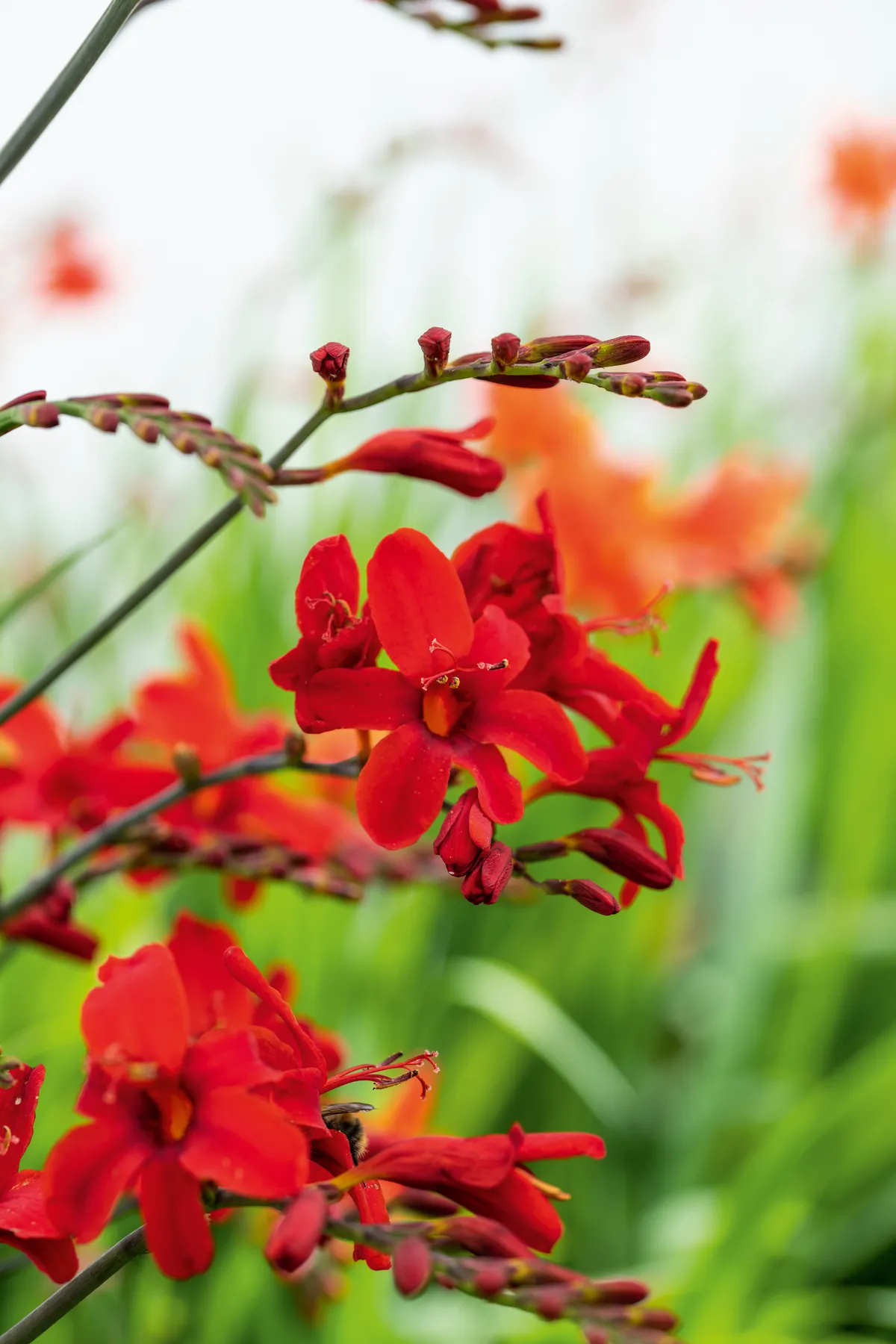
Recently introduced and already popular, the blood-red, velvety flowers are packed tightly along the stem. Smaller than C. ‘Lucifer’; it’s a vigorous plant but not to the point of being invasive. 1m x 40cm. AGM. RHS H5.
Crocosmia ‘Tamar New Dawn'
An eye-catching hybrid with reflexed petals that are either yellow or orangey-red on the same flower, creating a bi-coloured effect. Selected and named by Trecanna Nursery. 70cm x 45cm.

Crocosmia ‘Cornish Copper’

Its large, coppery-orange blooms have narrow, recurved petals that form an open flower. Selected by Trecanna Nursery and named for the copper mines that were once common in Cornwall. 1m x 45cm. RHS H4.
Crocosmia ‘Zeal Giant’
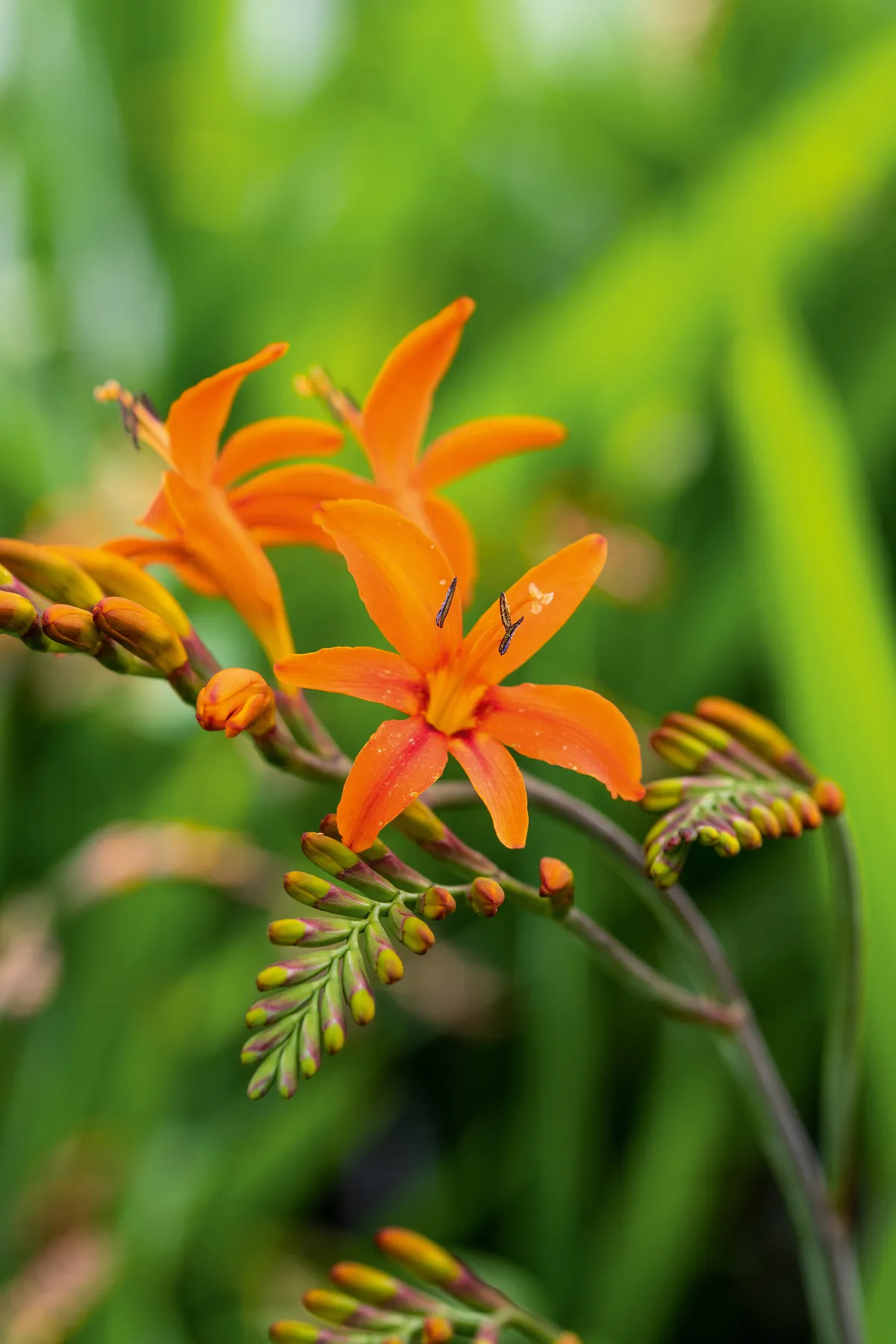
As its name suggests, this is the big boy of the family, with flower stems that can reach 1.8m tall on rich soil. The stems are flushed with purple and arch to show off the sprays of upright salmon-orange flowers. 1.8m x 90cm. AGM. RHS H4.







